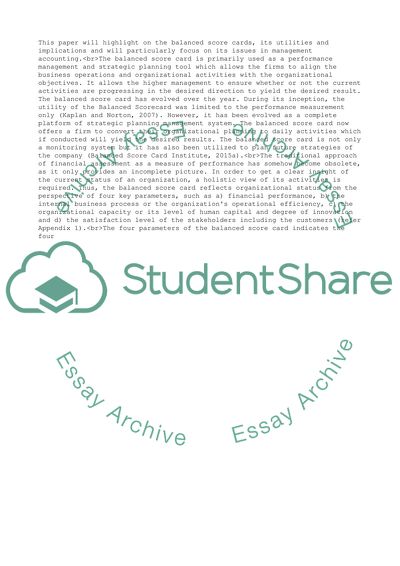Cite this document
(A Critical Report On Balanced Scorecard Essay Example | Topics and Well Written Essays - 2000 words, n.d.)
A Critical Report On Balanced Scorecard Essay Example | Topics and Well Written Essays - 2000 words. https://studentshare.org/finance-accounting/1875160-a-critical-report-on-balanced-scorecard
A Critical Report On Balanced Scorecard Essay Example | Topics and Well Written Essays - 2000 words. https://studentshare.org/finance-accounting/1875160-a-critical-report-on-balanced-scorecard
(A Critical Report On Balanced Scorecard Essay Example | Topics and Well Written Essays - 2000 Words)
A Critical Report On Balanced Scorecard Essay Example | Topics and Well Written Essays - 2000 Words. https://studentshare.org/finance-accounting/1875160-a-critical-report-on-balanced-scorecard.
A Critical Report On Balanced Scorecard Essay Example | Topics and Well Written Essays - 2000 Words. https://studentshare.org/finance-accounting/1875160-a-critical-report-on-balanced-scorecard.
“A Critical Report On Balanced Scorecard Essay Example | Topics and Well Written Essays - 2000 Words”. https://studentshare.org/finance-accounting/1875160-a-critical-report-on-balanced-scorecard.


